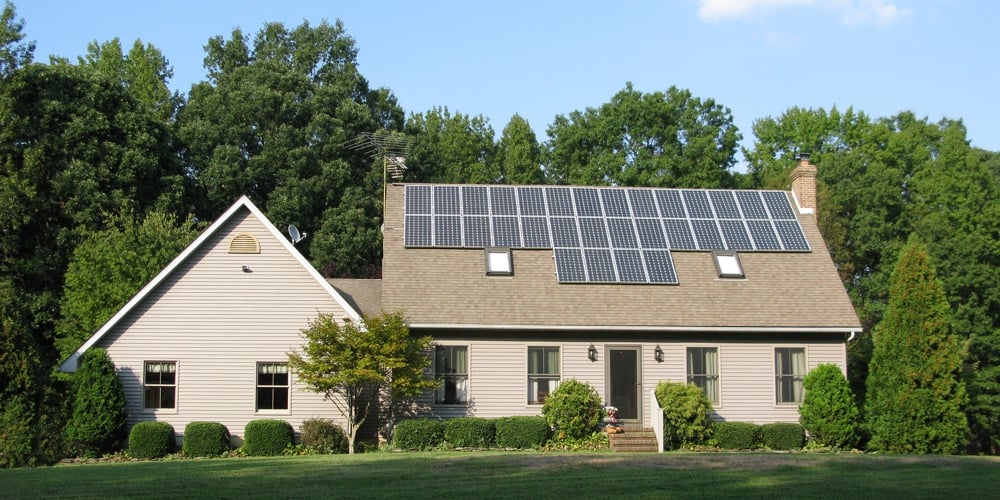Warming up to solar lending: The need & business case for credit unions as trusted lenders

Homeowners are rarely able to choose their energy providers, nor are they given much ability to control their electric bills, which are prone to fluctuate throughout the seasons. Billing variations place an even greater burden on consumers with lower, fixed incomes who may find it difficult to absorb cost spikes.
High energy costs and a lack of predictability give many homeowners good reason to turn to alternative energy sources like solar. Not only can solar energy help consumers save money on their bill, but local energy generation can create a more reliable electric grid when experiencing disruptors like heavy storms and other natural disasters.
Unfortunately, it can be hard for consumers to know where to start or which providers to trust. Credit unions can help fill that gap by providing reputable, local solar lending programs for their members.
The current state of solar lending throughout the United States is still a work in progress, as financial institutions grapple with how to develop solar energy loan products. This leaves prospective solar buyers vulnerable to predatory lenders that lock borrowers into unfair terms and interest rates. This can hinder the buyer’s investment, costing instead of saving them money.
Working with an organization they trust, like their own credit union, protects solar buyers from falling prey to abusive lenders and from navigating the solar energy and lending process alone. With a trusted credit union financing the investment, members can reap the benefits of a more reliable and affordable energy experience.
In addition to protecting members, solar lending programs provide credit unions with a new revenue stream. In the last decade alone, solar power experienced an average annual growth of 33%. Many credit unions are beginning to offer solar lending, and some – like Clean Energy Credit Union – are going big on alternative energy loans. With such a high demand for these offerings, credit unions have an opportunity to become more strategic and capitalize on a need by making offerings more visible to consumers and educating them on grants and federal funding options.
Factors to consider when launching a solar lending product
When starting a solar lending program, your credit union should first determine the types of loans you’re able to offer. Access to solar lending may be an expanded use of current loan offerings or a new suite of loan products. Your approach to solar lending will impact your compliance considerations, so it is important to have a clear goal of the lending products you already have or plan to offer.
As you explore the needs of members, determine whether the loan will be a secured or unsecured loan. Using solar panels as collateral, such as with a UCC filing or a home-secured loan, has benefits and disadvantages. It is also important to consider unique ability-to-repay underwriting factors. This includes likely changes to a member’s monthly electricity bill, which may be reduced if not eliminated after installation.
How to vet solar product vendors
It’s also prudent to conduct proper due diligence on solar vendors in your area. This will give your lenders the confidence necessary to educate members on the ins and outs of various solar products, as well as help identify reputable and reliable installers.
When researching installers, consider:
- Does the installer possess any certifications or belong to any relevant trade associations (ideally with a focus on solar energy)?
- Is the installer local?
- Does the installer have a track record of successful installation?
- Does the installer provide financing through their organization? How does it compare to what your credit union is offering? Are their lending practices consumer friendly? Do their loans contain hidden markups?
As you establish your program, bring your compliance and risk professionals into the conversation early. Understanding concentration limits, risks throughout the life of the loan and which regulations — both state and federal — apply to your products is a needed step for long term growth and sustainability of the loan product.
Consumer marketing & outreach
Once your lending program is in place, it’s critical to build awareness around the offering. We’ve seen credit unions fail to get solar or alternative energy lending products off the ground simply because the programs were not visible to the community. If your current or potential members don’t know you are a resource, they may not consider bringing that business opportunity to you. Worse, they may be left vulnerable to predatory lenders.
By implementing proper communication, marketing and education efforts, you can create opportunities for your organization’s growth and for consumers to take control of their energy bills.
At a minimum, add information about your solar lending offerings to your website. You can provide education and trustworthy resources to help consumers in the research phase. Beyond that, consider marketing your solar lending program through newsletters, community media and other outreach channels.
Moving forward with solar lending
Once you have a solar lending product in place, you can consider expanding it into a more robust clean energy lending program. Start small with maybe one or two offerings. Get your bearings on how to underwrite and develop these products. Then can you begin to branch into other energy concepts or offer similar loans to small businesses.
Several credit unions nationwide are already developing large clean energy loan portfolios. Don’t feel like you have to leverage these products for an entirely new business model. Simply adding one or two products is a great way to expand your existing portfolio of products while also meeting a growing need among your membership base.
As you consider solar lending products and programs, be sure to take advantage of peer discussions and industry opportunities for learning, such as Inclusiv’s training and certificate program for solar lending professionals. This will help you and your team stay on top of developments and best practices.
Co-author: Jessica Maldonado





